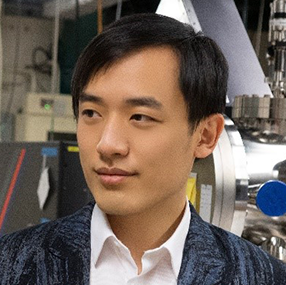 Kaichen Dong
Assistant professor, doctoral supervisor and special researcher, deputy director at the center of Double Helix
Tsinghua SIGS Assistant professor, doctoral supervisor and special researcher, deputy director at CDH
|
|
联系方式
Email: dkc22@sz.tsinghua.edu.cn Office Location:1203A Information Building, Tsinghua Shenzhen International Graduate School, University Town of Shenzhen. 个人简介
研究领域
Smart Radiative Temperature Control Technology, Zero-power MEMS Sensor, Moiré Photonics, AI-for-Science 研究成果
学术兼职
奖励荣誉
Contact information
Email: dkc22@sz.tsinghua.edu.cn Office Location:1203A Information Building, Tsinghua Shenzhen International Graduate School, University Town of Shenzhen. Biography
Prof. Kaichen Dong received a B.E. and a Ph.D. degree from the Department of Precision Instrument, Tsinghua University. in 2012 and 2017, respectively. From 2014 to 2016, he was a visiting Ph.D. student at the Department of Materials Science and Engineering, University of California, Berkeley, and Material Sciences Division of Lawrence Berkeley National Laboratory. From 2017 to 2019, he was a research associate at the Department of Precision Instrument, Tsinghua University. In 2019-2022, he did postdoctoral research at the Department of Materials Science and Engineering, University of California, Berkeley, and Material Sciences Division of Lawrence Berkeley National Laboratory. His research interests are mainly focused on Smart Radiative Temperature Control Technology, Zero-power MEMS Sensor, Moiré Photonics, and AI-for-Science. He has published papers in journals such as Science, Physical Review Letters, Advanced Materials, Science Advances, Nano Letters. He is also the reviewer for journals including Nature Photonics, Joule, Advanced Materials, Nature Communications, IEEE Transactions on Electron Devices. Research interest and expertise
Smart Radiative Temperature Control Technology, Zero-power MEMS Sensor, Moiré Photonics, AI-for-Science
Achievements
Selected Journal Papers [1] X. Zhao*, J. Li*, K. Dong#, J. Wu#, Switchable and Tunable Radiative Cooling: Mechanisms, Applications, and Perspectives, ACS Nano, 18, 18118-18128 (2024). [2] J. Li*, K. Dong*, T. Zhang, D. Tseng, C. Fang, R. Guo, J. Li, Y. Xu, C. Dun, J. J. Urban, T. Hong, C. P. Grigoropoulos, A. Javey, J. Yao, and J. Wu. Printable, emissivity-adaptive and albedo-optimized covering for year-round energy saving. Joule, 7, 1-16 (2023). [3] T. Zhang*, K. Dong*,#, J. Li, F. Meng, J. Li, S. Munagavalasa, C. P. Grigoropoulos, J. Wu, and J. Yao#. Twisted Moiré Photonic Crystal Enabled Optical Vortex Generation through Bound States in the Continuum. Nature Communications, 14, 6014 (2023). [4] K. Tang*, K. Dong*, J. Li*, M. P. Gordon, F. G. Reichertz, H. Kim, Y. Rho, Q. Wang, C.-Y. Lin, C. P. Grigoropoulos, A. Javey, J. J. Urban, J. Yao, R. Levinson, and J. Wu. Temperature Adaptive Radiative Coating for All-Season Household Thermal Regulation, Science, 374, 1504-1509 (2021). [5] K. Dong*, T. Zhang*, J. Li, Q. Wang, F. Yang, Y. Rho, D. Wang, C. P. Grigoropoulos, J. Wu, and J. Yao. Flat Bands in Magic-Angle Bilayer Photonic Crystals at Small Twists, Physical Review Letters, 126, 223601 (2021).
Hold and office or position
Honors and Awards
2024, Microsystems & Nanoengineering (MINE) Young Scientist Award 2024, PhotonIcs and Electromagnetics Research Symposium (PIERS) Young Scientist Award 2023, Chief Scientist of National Key R&D (Young Scientist) Program of China 2022, MIT Technology Review Top 35 Innovators Under 35 (TR35, Global List) 2022, NSFC Early-Career Award 2022, Shenzhen Pengcheng Peacock Plan (Class-B) |